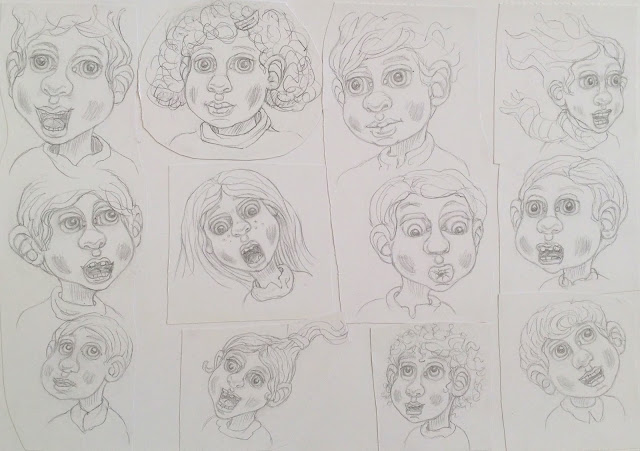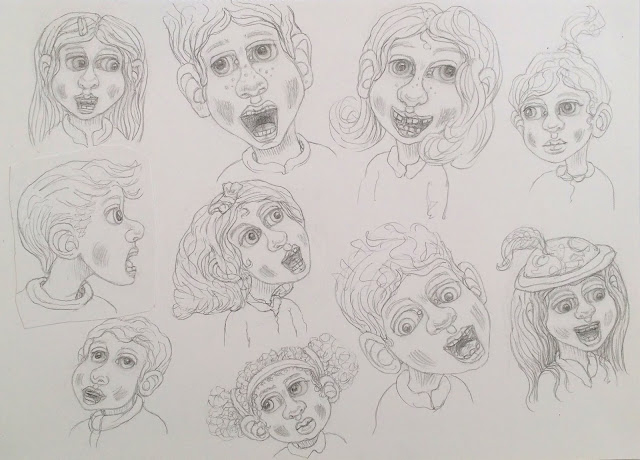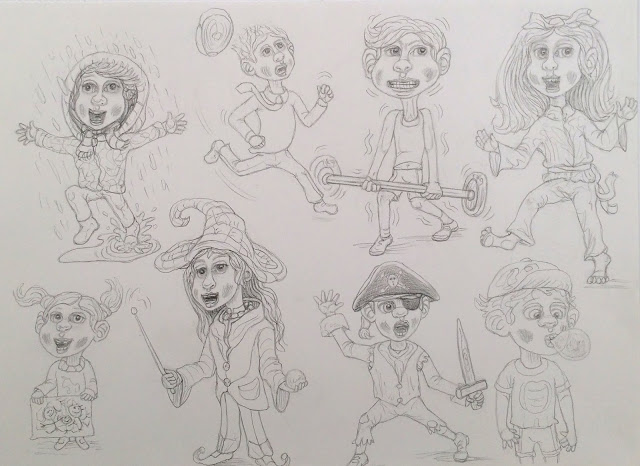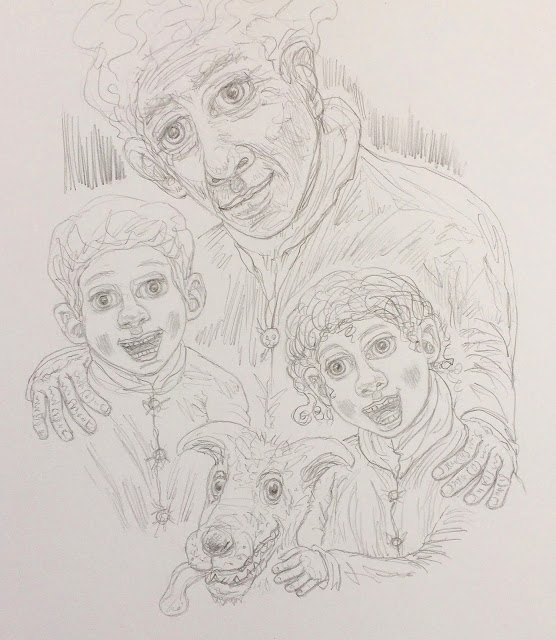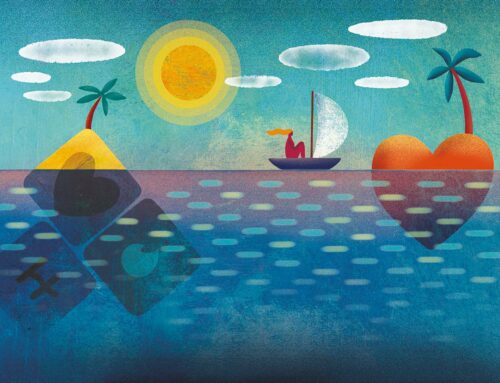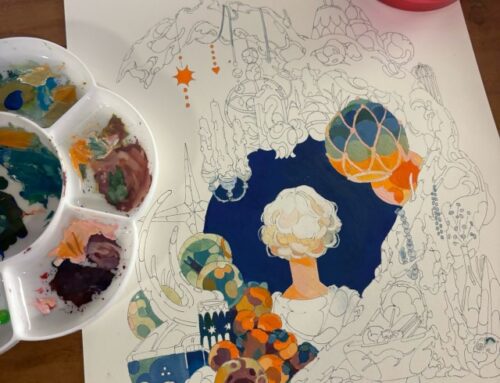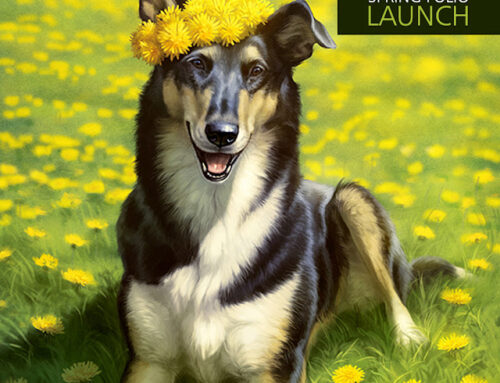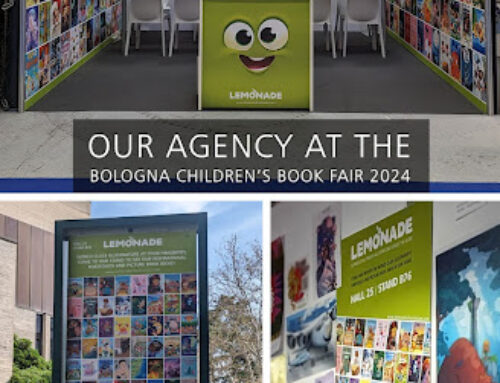As we all know the human body is extremely complex and the individual mind within each of us decides how our bodies interact with the world. Human emotion and the mannerisms it creates makes for a challenging thing for an artist to draw. If we then attempt to draw children, we are then faced with extra challenges. Children not only possess a smaller stature, but they also have their own set of nuances. My own personal style has been formulated over time developed by the very act of living, my susceptibility to read everything perhaps more diligently than many (sensitivity) my preference for detail and a modality that is expressed through knowledge of codifying images to fit a perceived norm, That is, infantilizing, cuteness, and universal mannerisms that constitute everyone else’s experience and knowledge of how children make their way in the world. Aside from emotional content, how do we represent naivety, for example. I guess this is only a perceived notion, within a drawn image context, or is it the overall universal visual cues we receive when viewing a drawn image of a child. we all know how a child of a certain age ‘looks’ but how do we translate this knowledge into a visualisation. Children have smaller features than adults, Their heads appear larger compared to the size of their bodies, they appear to have slightly larger eyes because their faces are more compacted generally, and because the nose for example is generally closer to their eye line. Their ears appear to be larger, because visually their heads are smaller. They tend to have bulbous cheeks (puppy fat as its known). They tend to have round rather than long faces. their hands are smaller as are their limbs. An illustrator can take these visual cues, alongside the use of universal coding, to exaggerate all these elements, thus reinforcing the overall universal iconography.Through infantilization the illustrator can exaggerate eye size, along with the ear and nose size, exaggerating slenderness of limbs, and slight stretching can produce good results. My style has been arrived at partly because I wished to produce humour in my work which is an obvious universal notion creating a sense of well being and happiness. A quality anyone would want for young minds eyes. Codifying humour, is well documented within what we call cartooning. Cartooning has a very long history with many, often famous protagonists of the art form. I had researched cartooning as part of my university studies, and in turn that knowledge has influenced my own style. I utilise many of the universal cues in my work The overall look of my style may appear cartoon like, however, I have developed it further to produce more of a drawing than a cartoon, I have further developed the general naturalism, further enhancing realism. To a point that is, until I feel comfortable that the image still retains the freshness and simplified form of a true cartoon. The drawings below are examples of how I have exaggerated and further infantilised the individual characters. This is the initial ‘raw’ line drawing, My style is such that after this stage I may develop the marks further and once colour is added very fine differences to the initial drawing may be seen although most of the time any changes are so subtle that they are not easily seen.
I don’t use reference material, I draw from my imagination, I think right i am going to draw a little girl for example, I then start at a point, sometimes I start with the curve of a face, or the nose, any point in fact, I don’t have a formula, I have seen some artists make grids or make a cross , or draw a head shape and fill it in, I just concentrate on producing, its a very arbitrary process. I just draw a line to indicate where it would be. I tend to focus on creating an individual character rather than focusing on the technical aspects of achieving it, a character begins to appear as more lines are produced this forces me to conjure up the image from my imagination, which in turn adds to the spontaneity of the drawing and the overall aesthetic.Working this way allows my style to show through more readily because I am thinking on my feet , quickly evaluating as i proceed. If I was periodically averting my eyes away from the work to view and compute reference material then the disruption in my thought process would be hindered and the work in my view would consequently become more stale, and preconceived, issues I am trying to avoid. As I want tiny quirks and foibles to be present (I don’t like to call them mistakes) adding to the naive quality of the illustration which I am trying to accommodate. The aim of producing this work was to indicate to potential commissioner’s how I would envisage a character design for them, and supply them with drawings that could be chosen first time or developed further, or re evaluated completely as and when they desired.

